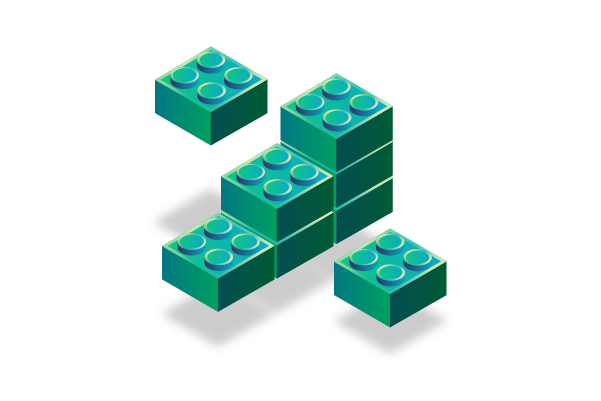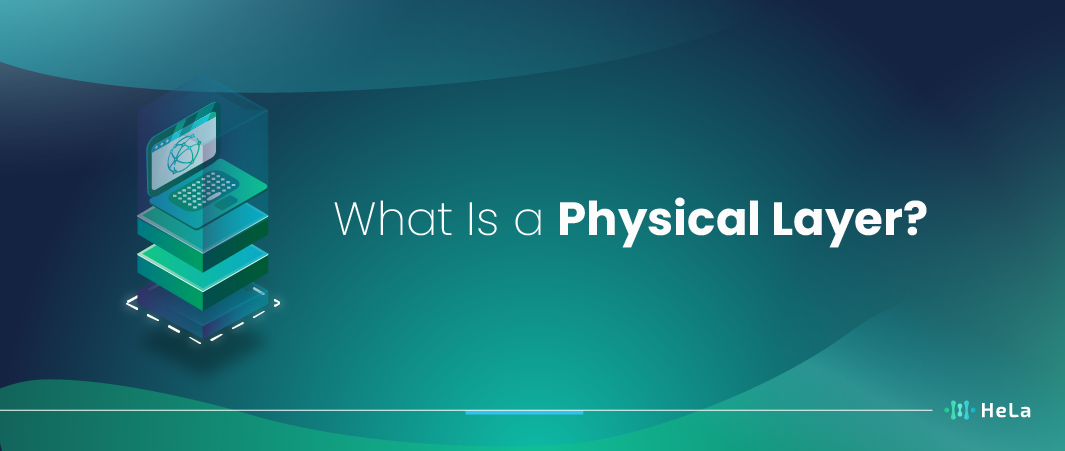In today’s digital age, we often take seamless communication for granted. While we’re busy sharing messages, scrolling through photos, and browsing the internet, there’s a hidden hero working tirelessly beneath the surface—the Physical Layer. This often-overlooked foundation of network communication plays a pivotal role in ensuring all our digital interactions run smoothly.
The Physical Layer is like the unsung magician of our digital lives, making the invisible possible. It’s responsible for the nitty-gritty work, like transmitting data between devices, whether it’s through Wi-Fi, Ethernet cables, or other means. Picture it as the sturdy bridge that enables information to flow from one point to another, ensuring that your text messages reach your friend or that cat video you’re streaming loads without buffering.
So, next time you send a message, stream a video, or connect with someone online, remember the unsung hero, the Physical Layer, that keeps our digital world interconnected and running smoothly behind the scenes.
What Is a Physical Layer?
The Physical Layer, the very bottom tier of the OSI (Open Systems Interconnection) model, plays a crucial role in our digital world. This model breaks down how computer and communication systems function into seven distinct layers. At the heart of it all is the Physical Layer, which handles the concrete aspects of data transmission. It’s all about dealing with the physical stuff: the wires that connect our devices or the wireless signals that zip through the air. And don’t forget about the hardware – the connectors, switches, and other tools that make this whole system work smoothly.
Also Read: What Is Cryptocurrency Transaction Speed?
Imagine it as the foundation of a house – without it, everything would crumble. Making sure that your messages can physically go from one location to another is what the Physical Layer is all about. The Physical Layer is therefore working behind the scenes to ensure that everything happens, whether you’re sending an email, streaming a movie, or surfing a website.
In short, this layer is all about the details, ensuring that our data is transported to its destination through wires and radio waves with the aid of all the devices we use on a daily basis. So, next time you’re watching cat videos online or sending an important document, remember to thank the Physical Layer for making it all possible.
Why is the Physical Layer Fundamental?

The Physical Layer is considered fundamental in the field of computer networking and telecommunications because it forms the very foundation upon which all other networking layers and protocols are built. It plays a pivotal role in the transmission of data between devices and is essential for several reasons:
Medium Transmission
The Physical Layer deals with the physical medium through which data is transmitted, be it copper cables, fiber optics, wireless radio waves, or other transmission mediums. It ensures that data can be effectively and reliably sent over these mediums.
Data Encoding
It is responsible for encoding the digital data into analog signals (modulation) for transmission and converting analog signals back to digital data (demodulation) at the receiving end. This process is crucial for transmitting data accurately.
Bit Rate and Bandwidth
The Physical Layer indicates the communication channel’s accessible transmission capacity as well as the bit rate at which information is sent. The sum of information that can be conveyed and gotten in a particular sum of time depends on these criteria.
Physical Topology
It also deals with the physical layout of network components, such as the arrangement of cables, connectors, and devices. This affects the overall network architecture and how devices are interconnected.
Signal Integrity
A crucial duty of the Physical Layer is to guarantee that the signals being sent are neither distorted or corrupted while being transmitted. It addresses problems including noise, interference, and signal attenuation that can lower the caliber of data transmission.
Compatibility
The Physical Layer sets standards for interfaces, cables, and connections to make sure that various devices may communicate with one another. This is crucial for building a network with various heterogeneous components.
Layered Model
The OSI (Open Systems Interconnection) model, a theoretical framework for comprehending how network protocols interact, includes the Physical Layer. It acts as the cornerstone upon which the functionality of other levels, including the Data Link Layer, Network Layer, Transport Layer, and Application Layer, are built.
Because it deals with the physical aspects of data transmission and supplies the necessary foundation for all higher-level network capabilities, the physical layer is fundamental. Without a reliable Physical Layer, the entire communication process in computer networks and telecommunications would be compromised.
Components of the Physical Layer

The Physical Layer is the first and lowest layer in the OSI (Open Systems Interconnection) model, which is a conceptual framework used to understand and standardize how different networking technologies interact. Raw binary data transfer over physical transmission medium, including copper wires, fiber optics, or wireless channels, is the main focus of this layer. It deals with the requirements for the electrical, mechanical, and functional elements required to create and sustain a physical connection between devices. The components of the Physical Layer include:
Physical Media
This refers to the actual transmission medium used to carry data. It can be twisted-pair cables, coaxial cables, optical fibers, or wireless radio waves. Each type of medium has its own characteristics, such as bandwidth, data rates, and susceptibility to interference.
Connectors and Pinouts
Connectors and pinouts are the physical interfaces and connection points that allow devices to be attached to the transmission medium. These can be standard connectors like RJ-45 for Ethernet or specialized connectors for fiber optic cables.
Transmission Rate
The pace at which information is sent by means of the medium is alluded to as the transmission rate, frequently alluded to as the information rate or transfer speed. Depending on the innovation and medium utilized, it can change significantly and is measured in bits per moment (bps).
Signal Encoding
Signal encoding is the method used to represent binary data as electrical or optical signals on the transmission medium. Different encoding techniques, such as Manchester encoding or NRZ (Non-Return-to-Zero) encoding, are used to ensure that the receiver can accurately interpret the transmitted data.
Line Coding
Line coding defines how digital data is converted into electrical signals for transmission. It helps in synchronization, error detection, and signal recovery. Examples of line coding schemes include AMI (Alternate Mark Inversion) and RZ (Return-to-Zero) encoding.
Physical Topology
The Physical Layer is responsible for defining the physical layout or topology of the network, such as bus, star, ring, or mesh. The choice of topology affects how devices are interconnected and how data flows.
Bit Synchronization
This aspect ensures that both the transmitting and receiving devices are synchronized in terms of when to send and receive bits. This synchronization is crucial to correctly interpret the transmitted data.
Physical Signaling
Physical signaling involves the modulation and demodulation of signals to send data over the transmission medium. It specifies voltage levels, frequencies, and signal types used for communication.
Noise and Interference
The Physical Layer deals with issues related to noise and interference on the transmission medium. It includes methods to mitigate the impact of noise, crosstalk, and other disturbances that can degrade the signal quality.
Physical Layer Devices
Hubs, repeaters, and transceivers are just a few of the gadgets employed within the Physical Layer to support data transfer. These gadgets assist with signal regeneration, amplification, and conversion.
Challenges Faced by the Physical Layer
Anyone working in the networking or telecommunications industries needs to be aware of the numerous difficulties the physical layer in a communication system faces. The physical transmission of data, including the transmission channel, signal encoding, and modulation techniques, is handled by this layer, which is the bottom layer in the OSI (Open Systems Interconnection) paradigm. Here are some of the main difficulties the physical layer is facing:
Signal Attenuation
Signals traveling through a transmission medium, such as copper cables, optical fibers, or wireless channels, tend to weaken as they propagate over long distances. This attenuation can lead to signal loss and degradation, which the physical layer must address to ensure reliable communication.
Noise and Interference
The physical layer must deal with a variety of noise and interference, including crosstalk, electromagnetic interference (EMI), and radio frequency interference (RFI) from the surroundings. These can affect the integrity of the signal and call for methods like noise filtering and error correction.
Bandwidth Limitations
Each transmission medium has a limited bandwidth or data-carrying capacity. The physical layer must efficiently utilize the available bandwidth while ensuring high data rates for communication. This involves modulation schemes and multiplexing techniques to optimize bandwidth usage.
Signal Dispersion
Different transmission mediums can introduce signal dispersion, where signals spread out over time, leading to intersymbol interference (ISI). This can be particularly challenging in high-speed data transmission over long-distance channels.
Propagation Delay
The length of time it takes for a signal to travel from its source to its destination is known as signal propagation delay, and it is another issue dealt with by the physical layer. This delay can affect real-time communication applications and must be managed in networking systems.
Synchronization
Clock synchronization between transmitter and receiver must be handled by the physical layer in order to guarantee accurate data transmission and reception. Data misalignment and errors can be caused by timing problems.
Physical Security
The physical layer is responsible for ensuring the physical security of communication channels. This includes safeguarding against eavesdropping, tampering, and unauthorized access to cables or wireless transmission.
Multiple Access and Collision Avoidance
In shared communication channels, such as Ethernet networks, multiple devices may need to access the medium simultaneously. The physical layer must manage access control and collision avoidance mechanisms to prevent data collisions.
Adaptability
The physical layer must adjust to new standards and transmission technologies as technology advances, such as the switch from copper to optical fiber or the introduction of new wireless technologies. To fulfill the ever-changing requirements of modern communication networks, this agility is essential.
Energy Efficiency
In wireless and mobile communication, energy efficiency is a significant concern. The physical layer must optimize energy usage in devices to prolong battery life and reduce power consumption.
Understanding and addressing these challenges is essential for the design and implementation of robust and efficient communication systems, ensuring reliable data transmission and the overall success of modern networks.
Advancements in the Physical Layer

The Physical Layer, the bedrock of communication networks, keeps evolving and adapting as technology advances to meet the rising demands of our digital era. The following important developments:
5G and Beyond
The introduction of 5G technology has marked a significant milestone in the evolution of the Physical Layer. This generation of wireless communication has not only amplified the capacity and speed of data transmission but has also introduced low-latency capabilities, enabling real-time communication for applications like autonomous vehicles and augmented reality.
The Physical Layer plays a pivotal role in ensuring these signals are transmitted efficiently, supporting the multi-gigabit data rates that 5G promises. Moreover, it involves advanced antenna technologies and beamforming techniques to optimize signal quality and coverage, making it a fundamental enabler of the Internet of Things (IoT) and smart city initiatives.
Quantum Communication
Researchers and analysts are progressing the subject of quantum communication by utilizing the concepts of quantum material science. Through the utilization of quantum highlights like superposition and trap, this cutting-edge innovation guarantees to transmit information at tall speeds whereas keeping up the most noteworthy levels of security.
Quantum key distribution (QKD) systems are necessary for the Physical Layer, which in quantum communication systems deals with the transmission and receiving of quantum bits or qubits. Quantum communication holds the potential to revolutionize data security, as any attempt to intercept quantum-encoded information would disrupt the quantum state, alerting users to potential eavesdropping.
Also Read: What is Crypto Market Sentiment?
Enhanced Fiber Optics
Fiber optic technology has long been a cornerstone of high-speed data transmission, and recent developments have further elevated its capabilities. New techniques for transmitting light through optical fibers, such as multi-core fibers and mode-division multiplexing (MDM), have opened doors to even faster data speeds and greater distances.
In addition to meeting the increased demand for high-capacity connections in data centers and long-haul networks, these fiber optic technological breakthroughs also improve the effectiveness and speed of last-mile connectivity in urban areas. As a result, fiber optic systems’ Physical Layer has developed to incorporate these developments, enabling smooth integration and optimization of data transmission across fiber networks.
The revolution of how we connect and communicate in an increasingly digital world is being driven by these advances in the Physical Layer. They are affecting how we communicate and share data by broadening the conceivable outcomes of wired and remote communication as well as clearing the way for up and coming progressions in telemedicine, virtual reality, and independent frameworks.
Conclusion
By evacuating the layers of our computerized world, one can see the colossal complexity and style of the frameworks that drudge nonstop to keep us associated. At the very heart of this matrix, the Physical Layer stands as a testament to the marriage between tangible hardware and intangible data.
Its role might often be overlooked in favor of more high-profile components, but without the Physical Layer, our digital dialogues would be rendered mute. As we venture further into an era of boundless digital communication, appreciating the foundational aspects like the Physical Layer helps us understand and value the marvel of interconnectedness we so often take for granted.
In the grand tapestry of network communication, every thread counts. And the Physical Layer? It’s the very fabric upon which this vast tapestry is woven.
Disclaimer: The information provided by HeLa Labs in this article is intended for general informational purposes and does not reflect the company’s opinion. It is not intended as investment advice or recommendations. Readers are strongly advised to conduct their own thorough research and consult with a qualified financial advisor before making any financial decisions.

Joshua Soriano
I am a writer specializing in decentralized systems, digital assets, and Web3 innovation. I develop research-driven explainers, case studies, and thought leadership that connect blockchain infrastructure, smart contract design, and tokenization models to real-world outcomes.
My work focuses on translating complex technical concepts into clear, actionable narratives for builders, businesses, and investors, highlighting transparency, security, and operational efficiency. Each piece blends primary-source research, protocol documentation, and practitioner insights to surface what matters for adoption and risk reduction, helping teams make informed decisions with precise, accessible content.
- Joshua Soriano#molongui-disabled-link
- Joshua Soriano#molongui-disabled-link
- Joshua Soriano#molongui-disabled-link
- Joshua Soriano#molongui-disabled-link

